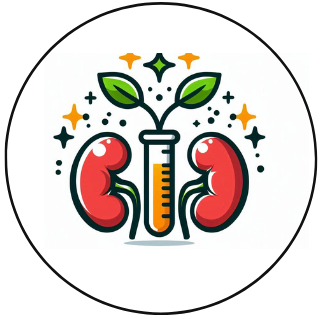Tai Chi for Kidney Health: 6 Powerful Benefits and a Beginner Routine
Tai Chi, an ancient Chinese martial art, is well known for its gentle, flowing movements that promote physical and mental well-being. But did you know that Tai Chi can also support kidney health? Whether you’re managing chronic kidney disease (CKD), looking to improve circulation, or reduce stress, Tai Chi offers a low-impact, holistic approach to strengthening kidney function.
In this guide, we’ll explore six ways Tai Chi benefits kidney health and provide a simple 5 to 8-move Tai Chi routine specifically designed to support renal function.
6 Ways Tai Chi Supports Kidney Health
1. Enhances Blood Circulation to the Kidneys
Tai Chi’s slow, deliberate movements stimulate blood flow throughout the body, ensuring the kidneys receive a steady supply of oxygen and nutrients. Improved circulation helps the kidneys function efficiently and can slow the progression of kidney disease.
2. Reduces Stress and Lowers Cortisol Levels
Chronic stress and high cortisol levels contribute to high blood pressure, which is a leading cause of kidney damage. Tai Chi incorporates deep breathing and mindfulness, activating the parasympathetic nervous system to reduce stress and support overall kidney health.
3. Helps Regulate Blood Pressure
Since high blood pressure can lead to kidney disease, maintaining healthy blood pressure is crucial. Research suggests that Tai Chi can help lower blood pressure by improving heart health, reducing arterial stiffness, and promoting relaxation.
4. Supports Fluid Balance and Reduces Swelling
People with kidney disease often experience edema (fluid retention), particularly in the legs and ankles. Tai Chi’s gentle, rhythmic movements stimulate lymphatic drainage and circulation, reducing swelling and helping the body maintain a healthier fluid balance.
5. Increases Energy and Reduces Fatigue
Kidney disease can lead to toxin buildup, causing fatigue and low energy levels. Tai Chi enhances oxygen flow, improves stamina, and promotes a sense of well-being, making it an excellent way to combat kidney-related fatigue.
6. Strengthens the Mind-Body Connection
Tai Chi encourages mindfulness, helping individuals become more aware of their body’s signals, dietary choices, and hydration needs—all of which contribute to kidney health.
A Beginner-Friendly Tai Chi Routine for Kidney Health
This simple, beginner routine is designed to gently support kidney function by improving circulation, reducing stress, and promoting relaxation. Perform each movement slowly and fluidly, coordinating with your breath. Just like any other physical routine with which you are not familiar, it may take a little practice to become comfortable with this. Don’t quit just because it may be a bit awkward in the beginning.
🔹 1. Centering and Deep Breathing
- Stand with feet shoulder-width apart, knees slightly bent.
- Place hands on the lower abdomen, where the kidneys are located.
- Inhale deeply through the nose, expanding the belly; exhale slowly through the mouth.
- Repeat for 5-7 breaths to relax and center yourself.
🔹 2. The Water Wave (Enhances Kidney Energy Flow)
- Slowly raise both hands in front, palms facing upward (as if lifting water).
- Gently push forward and down, imagining tension leaving your body.
- Repeat 5-8 times, keeping movements smooth and controlled.
🔹 3. Floating Cloud (Boosts Circulation & Lymphatic Flow)
- Shift weight onto one foot and sweep arms side to side like floating clouds.
- Keep movements continuous and relaxed.
- Perform 4 repetitions per side (total of 8).
🔹 4. Holding the Golden Ball (Strengthens Kidney Qi & Balance)
- Imagine holding a soft ball in front of your chest.
- Shift weight to the left foot, lifting the right foot slightly while “holding” the ball.
- Shift to the right foot and repeat.
- Continue for 30 seconds to 1 minute.
🔹 5. Kidney Massage & Qi Gathering (Stimulates Kidney Function)
- Place hands on your lower back (kidney area) and rub gently in circular motions.
- Sweep arms forward in a soft, scooping motion, as if gathering positive energy.
- Repeat 5-7 times.
🔹 6. The Gentle Wave (Balances Energy & Promotes Relaxation)
- Stand with feet hip-width apart.
- Slowly sway from side to side, shifting weight smoothly between feet.
- Move hands gently in a wave-like motion, following your breath.
- Perform for 1-2 minutes.
🔹 7. Closing Movement: Grounding & Relaxation
- Stand still, arms at sides, and close your eyes.
- Take slow, deep breaths, visualizing fresh energy flowing through your kidneys.
- Gently shake out arms and legs to release any remaining tension.
How Often Should You Practice?
For best results, aim to practice Tai Chi 3 to 5 times per week. Even a few minutes a day can help improve kidney function, reduce stress, and support overall well-being.
Final Thoughts
Tai Chi offers a gentle yet powerful way to support kidney health. By incorporating these movements into your routine, you can improve circulation, reduce stress, and maintain better energy levels—all while nurturing your kidneys.
Do you have a particular interest in a health-related field? Would you like to share your expertise and earn money by sharing? click the following link to find out how. https://www.wealthyaffiliate.com/?a_aid=8c604d14

